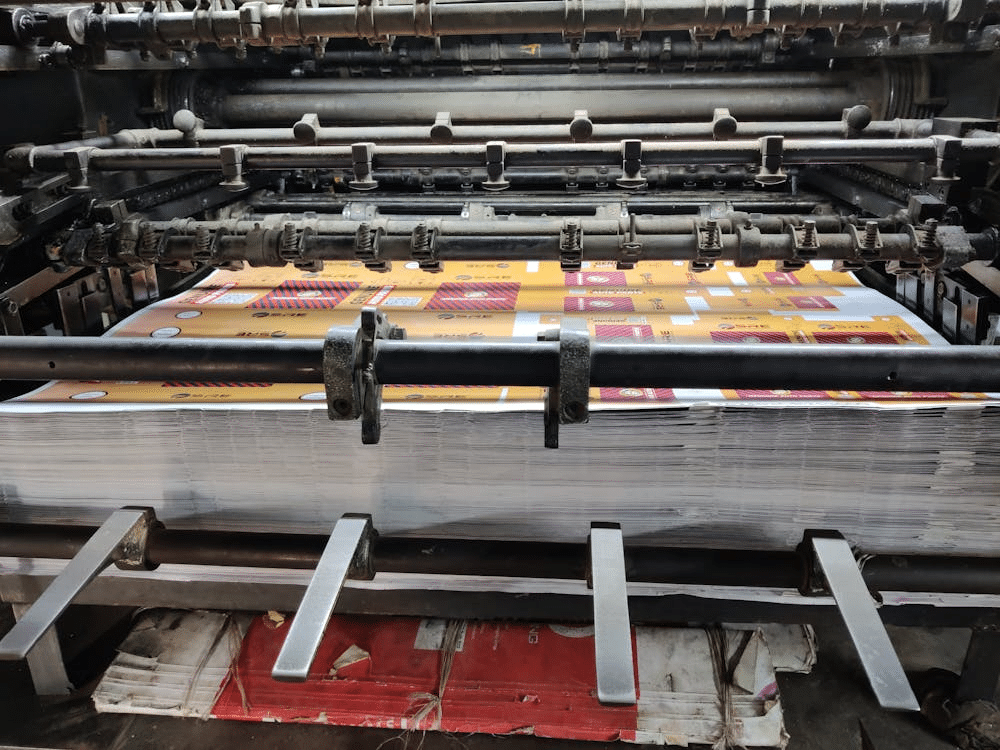By: PR Fueled
A lot of people are trying to live more sustainably these days. Minimizing our daily consumption of Earth’s resources can lead to tangible and beneficial changes for our world. One approach is to engage in green printing.
Even though paper use has decreased due to technological advancements, we must still exercise caution when deciding what should be printed and what can wait. Reducing the amount of paper you throw away is one approach to lessening your environmental impact and saving trees.
Unfortunately, what is the ideal way to print in an eco-friendly way? This post examines sustainable business printing at minespress.com that processes to help you make more moral choices.
How Does Eco-Friendly Printing Work?
To print eco-friendly is to employ procedures that lessen the negative effects of office printing on the environment. Typically, this necessitates several essential steps, such as:
- Making use of eco-friendly products
- Making use of energy-saving printing methods
- Taking measures to minimize waste
A typical year for an office worker is 10,000 sheets of paper. Given that a single tree can yield anywhere from 10,000 to 50,000 sheets of paper, each employee could theoretically produce enough paper to cover a tree’s annual needs. Those are some hefty figures, and it doesn’t even account for the effects of carbon emissions or the manufacturing and disposal of ink and toner.
These substantial costs to the environment can be mitigated by green printing programs. Learning about and using eco-friendly printing is becoming increasingly important as companies strive to embrace more sustainable practices company-wide.
Reasons to Use Eco-Friendly Printing Methods
When researching environmentally friendly printing methods, many look for advantages to their company’s reputation and brand. While it’s true that green printing processes bring attention to a company’s commitment to sustainability, there are many more advantages to printing in an eco-friendly manner than just improving the company’s public image. Some major advantages of eco-friendly printing in the workplace are as follows:

- Less Environmental Impact—Switching to paper that is recycled or made from sustainable sources may help your company save forests and lessen habitat loss.
- Lessen Your Impact on the Environment-Your team may make a significant difference in the fight against climate change by switching to energy-efficient printers.
- Cutting down on printing and using energy-efficient printing technology can save you a lot of money on energy bills.
- Sustainability initiatives are the standard in today’s market and can only help improve brand image. Protecting the environment and enhancing your brand’s image are two benefits of going green.
- Environmental Regulations Are Getting Tighter; Keeping Your Office Green Can Help You Stay In Compliance.
Introducing Eco-Friendly Printing to Your Business: 6 Proven Steps
Printing is a vital aspect of running a business. However, this doesn’t imply your firm can’t make significant strides in adopting greener practices. Embracing green printing goes beyond just an eco-friendly initiative; it’s a call to streamline processes, save money, and foster a greener work atmosphere. We have compiled six practical suggestions to help your business make the switch to greener printing practices.
1. Opt for Eco-Friendly Printing Paper
Responsible fiber sourcing is one of the crucial stages towards sustainability in the commercial printing business, as over 40% of the world’s timber is utilized for paper manufacture. One solution is to switch to recycled paper or paper made with sustainable fibers. Sourcing materials from responsibly managed forests or recycled fibers, certified by the Forest Stewardship Council (FSC), helps reduce tree loss and the need for virgin resources.
Sustainable solutions should be prioritized by printers to safeguard various life forms and assist forest conservation. Since paper accounts for half of all company waste, there are many things to consider when choosing materials for a print operation. There may not be a single ideal option, but it is critical to give priority to a sustainable solution that meets financial goals.
2. Print with Recycled Paper

The sustainability equation includes more than just paper. And then there’s ink. Reduce your environmental impact—during manufacturing and disposal—by switching to inks made from vegetable or soy sources instead of petroleum. Your company’s printing processes can less impact the environment if you switch to these inks, which are more biodegradable.
3. Cut Down on Wastefulness
Wherever you can, make an effort to recycle used products. Instead of throwing away used printed sheets, keep them for future projects or use them as scrap paper. Recycling is a better option. You may recycle empty toner bottles, ink cartridges, and other office supplies at several locations.
Keep it out of the trash when you upgrade your printer! If your old machine is still functioning and you merely want to upgrade, you can sell it for additional cash! In addition to helping the environment by reusing and recycling items, consumers can save money by purchasing used goods on the secondary market.
4. Opt for environmentally friendly toners and inks.
Different inks and toners have different environmental effects. Using inks and toners that are less harmful to the environment can achieve sustainable printing practices.
Refilling the ink tank with bottled ink is an alternative to buying new ink tanks when the current one is dry. This helps cut down on waste and is better for the environment.
5. Monitoring Printing

Use print management software to know how much paper, toner, and printer you use. If you can deduce the trends in usage, you can find ways to cut down on wasteful printing, paper jams, and resource consumption.
6. Print on both sides of the paper
Cutting your paper use in half is as easy as switching to double-sided printing—a small adjustment with big benefits. You should choose duplex (double-sided) printing as the default setting, even if it might not be ideal for every print job. This is a simple yet effective approach to decrease paper consumption.
In the end!
The six suggestions listed above are only the tip of the iceberg regarding environmentally friendly printing practices! One great way to help the environment is to use green printing methods at home or the office. Sustainable printing processes provide the dual benefit of being good for the environment and saving money for you or your business.
With the automated duplex printing option available on many printers, you can pick it up when you need to print (no need to manually flip the paper and put it back in!). This easy action might significantly minimize the paper used at your workplace. If you want to protect the planet, consider incorporating some of the abovementioned suggestions for green printing into your daily routine.
Published By: Aize Perez

















